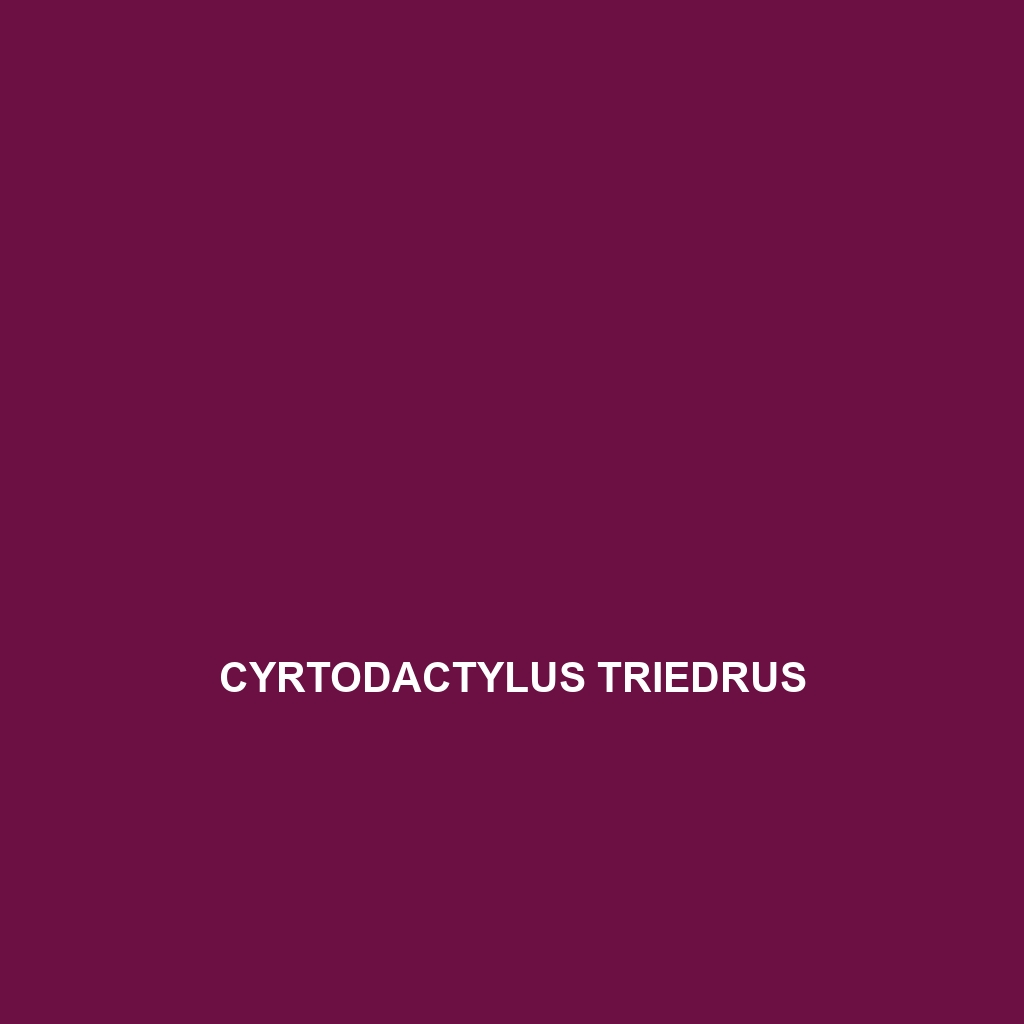Cyrtodactylus tiomanensis – Species Description
Common Name: Cyrtodactylus tiomanensis
Scientific Name: Cyrtodactylus tiomanensis
Habitat
Cyrtodactylus tiomanensis is primarily found in the tropical rainforests of Tioman Island, Malaysia. This species thrives in humid environments with ample vegetation, typically residing in areas with leaf litter, rock crevices, and along the base of trees. The warm climate and high humidity levels play a crucial role in its survival and breeding, making these coastal rainforests an ideal habitat for this gecko species.
Physical Characteristics
The Cyrtodactylus tiomanensis measures approximately 12 to 15 centimeters in length. Its coloration is usually a mix of brown and grey tones, featuring dark mottling that provides excellent camouflage against the forest floor. Distinctively, this gecko has elongated limbs and a flat body, which aids in climbing and navigating its arboreal habitat. The presence of fine granular scales and relatively large eyes are notable characteristics of this species, which enhance its adaptability to its environment.
Behavior
The behavior of the Cyrtodactylus tiomanensis is characterized by its nocturnal activity. This gecko is primarily terrestrial but is often seen climbing trees in search of food or shelter. It exhibits territorial behaviors, particularly during the breeding season, and is known for its quick movements to evade predators. During the daytime, it often hides under rocks or within foliage, relying on its excellent camouflage to avoid detection.
Diet
The dietary habits of Cyrtodactylus tiomanensis include a varied diet of insects and other small invertebrates such as crickets, beetles, and moths. This gecko uses its keen eyesight and agility to hunt its prey, showcasing its role as an insectivore in the ecosystem. The choice of diet is largely influenced by the availability of food sources in its rainforest habitat.
Reproduction
Reproductive habits of the Cyrtodactylus tiomanensis involve seasonal breeding, which typically occurs during the rainy months when temperatures are optimal for egg development. Females are known to lay clutches of one to two eggs, usually in hidden locations such as under rocks or in leaf litter. The eggs incubate for several weeks before hatching, with the young geckos emerging as miniatures of the adults, equipped to fend for themselves shortly after.
Conservation Status
The Cyrtodactylus tiomanensis is currently classified as *Vulnerable* due to habitat loss from deforestation and agricultural expansion. Conservation efforts are crucial to protect this species and its rainforest habitat, ensuring the preservation of biodiversity in the region.
Interesting Facts
One fascinating aspect of the Cyrtodactylus tiomanensis is its ability to change color slightly with environmental changes, aiding its camouflage. Additionally, it is part of a larger family of geckos known for their unique vocalizations, which are used for communication during mating rituals. This species also plays a significant role in controlling insect populations, contributing to the ecological balance of its habitat.
Role in Ecosystem
As an insectivore, the Cyrtodactylus tiomanensis plays a vital role in maintaining the ecological balance of its rainforest environment. By controlling insect populations, this gecko contributes to the health of the ecosystem, supporting plant growth and providing food sources for larger predators. Its presence is an indicator of a healthy, diverse habitat, showcasing the interconnectedness of species within the rainforest ecosystem.
